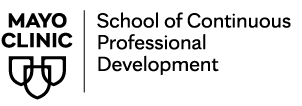Dr. Eslinger - Does circulating tumor DNA predict recurrence rates in non-metastatic cancer compared to traditional surveillance?
Learning objectives
Upon completion of this activity, participants should be able to:
- Define circulating DNA and it’s use as a non-invasive test for minimal residual disease monitoring.
- Evaluate the pros and cons of tumor informed vs tumor agnostic ctDNA assays.
- Examine and appraise several systematic reviews and meta-analyses regarding the use of ctDNA in colon, lung, and breast cancer.
ATTENDANCE / CREDIT
Text the session code (provided only at the session) to 507-200-3010 within 48 hours of the live presentation to record attendance. All learners are encouraged to text attendance regardless of credit needs. This number is only used for receiving text messages related to tracking attendance. Additional tasks to obtain credit may be required based on the specific activity requirements and will be announced accordingly. Swiping your badge will not provide credit; that process is only applicable to meet GME requirements for Residents & Fellows.
TRANSCRIPT
Any credit or attendance awarded from this session will appear on your Transcript.
For disclosure information regarding Mayo Clinic School of Continuous Professional Development accreditation review committee member(s) and staff, please go here to review disclosures.

 Facebook
Facebook X
X LinkedIn
LinkedIn Forward
Forward